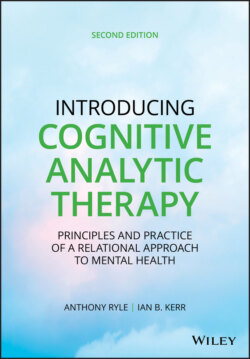Читать книгу Introducing Cognitive Analytic Therapy - Anthony Ryle - Страница 20
CAT Is Research Based
ОглавлениеThe historic failure of psychodynamic therapists to evaluate seriously the efficacy and effectiveness of their work and their resistance to doing so, partly for understandable reasons, led in the past to a lack of serious support in the NHS (National Health Service) in the UK for therapy in general. It appears also to have contributed, paradoxically, to the current frequently indiscriminate and uninformed application of an “evidence‐based” paradigm, important as evidence is, that is crude and problematic given the multidimensional complexity of mental disorder and treatments for it, and also given the increasing recognition of “common factors” in effective therapies and treatments (Castonguay & Beutler, 2006; Gabbard, Beck, & Holmes, 2005; Greenberg, 1991; Lambert, 2013; Norcross, 2011; Parry, Roth, and Kerr, 2005; Roth & Fonagy, 1996; Wampold & Imel, 2015). The outcome research that led on to the development of CAT pre‐dated these developments, originating in a program dating back to the 1960s that aimed to develop measures of dynamic change. While the “formal” research base for CAT remains relatively slender (Calvert & Kellett, 2014), the evolution of the model over the last 30 years has been accompanied by a continuous program of largely small‐scale but important research into both the process and outcome of therapy, and also the use and evaluation of CAT in contextual or consultancy type approaches, and this continues on an expanding scale. In addition, a number of more “formal” randomized controlled trials have been successfully undertaken in recent years, notably for “borderline personality”‐type disorders (see Chapter 10). One consistent research finding has been the apparently superior effectiveness of CAT in engaging “difficult” or “hard to help” patients' of whatever diagnosis, and retaining them in treatment (Calvert & Kellett, 2014).
